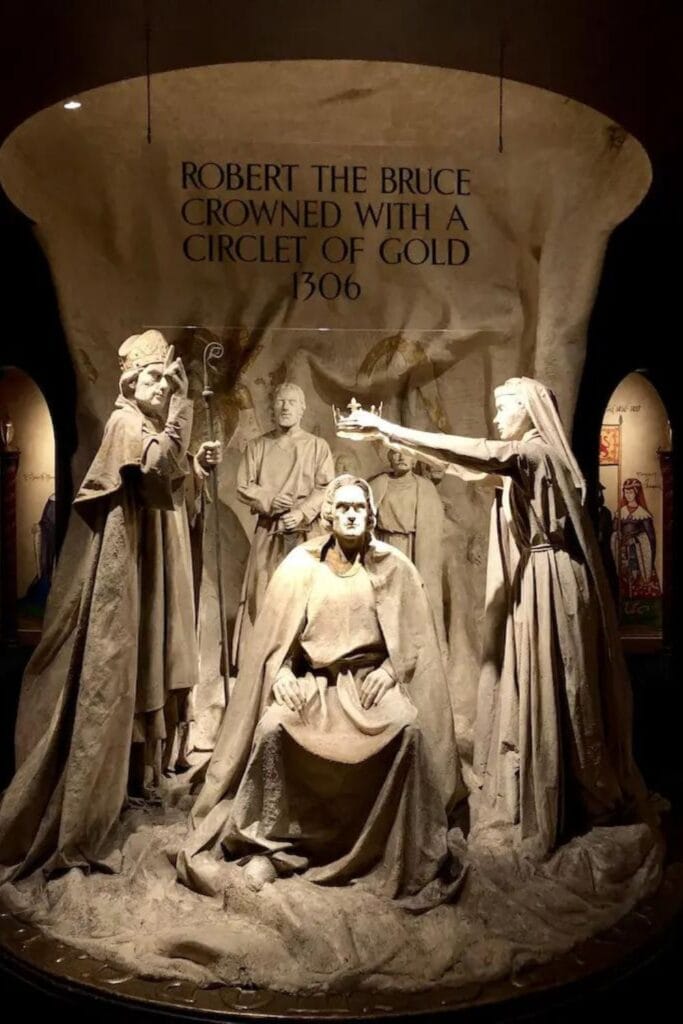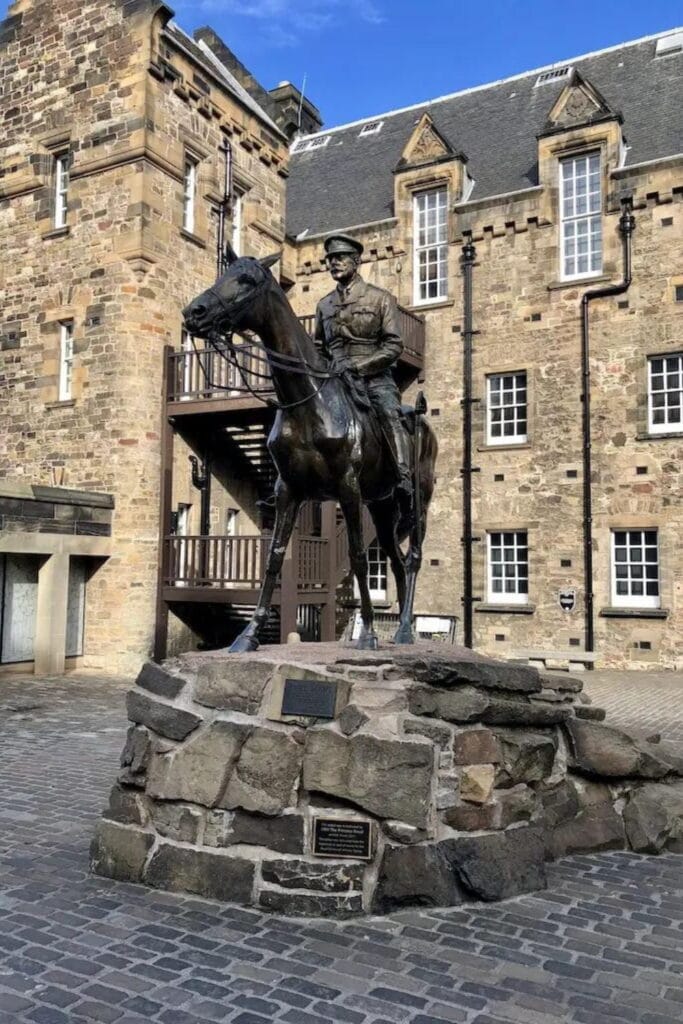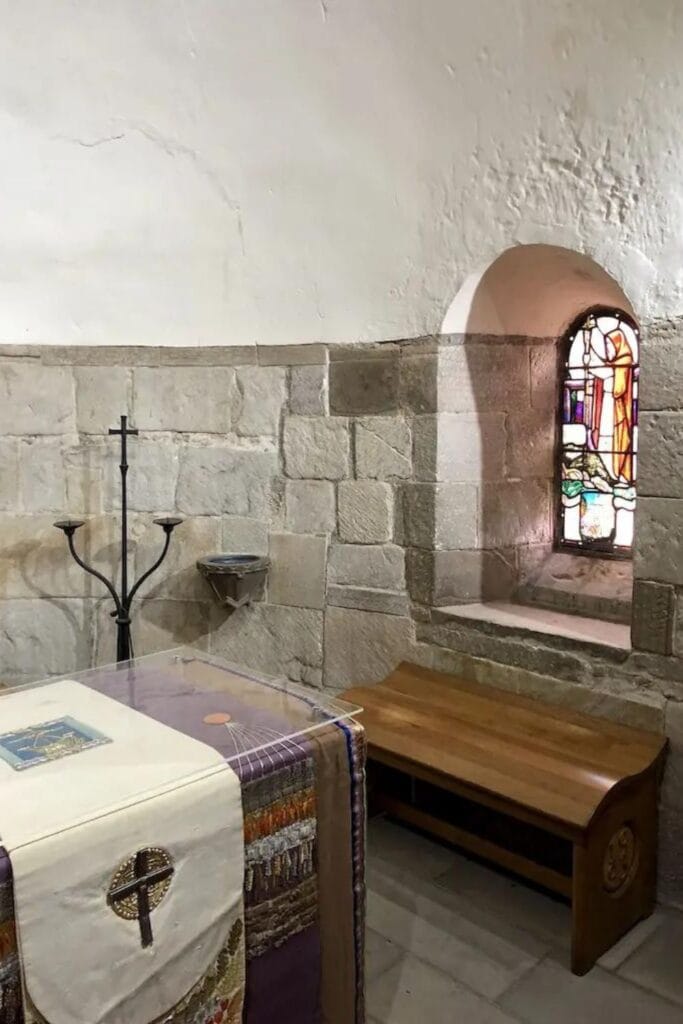Edinburgh Castle: A Visitor Guide!
Edinburgh Castle is one of the most visited attractions in Scotland and one of Edinburgh’s most iconic landmarks. It’s hard not to notice the dominating castle, towering proudly above the city of Edinburgh on what’s known locally as Castle Rock.
As one of Edinburgh’s most popular visitor sites, it can also be one of the busiest, with crowds of tourists descending daily, especially in the summer months. To get the best out of your visit to Edinburgh Castle, check out this guide, which provides everything you need to know.
This post may contain affiliate links. That means that if you click on a link and purchase something I recommend, I will receive a small commission at no extra cost to you. As an Amazon Associate, I earn from qualifying purchases. This helps keep my website up and running and is very appreciated. Thank you for your support! You can read my full disclosure policy here.
History Of Edinburgh Castle
The earliest records of Edinburgh Castle date back to 1093 when the site was known as the ‘Castle of the Maidens’. However, evidence suggests that people lived on Castle Rock as far back as the Bronze Age, nearly 3000 years ago. The site as we know it now varies in date, with the oldest building, the lovely St Margaret’s Chapel dating back to 1130 and is Edinburgh’s oldest building.
Throughout the years, the castle has been the site of many battles and conquests and found itself ruled by both the Scottish and the English, with the castle changing hands many times. The castle has also been home to many Kings and Queens. The first was Queen Margaret, who died here in 1093 and was made a saint by Pope Innocent IV in 1250. St Margaret’s Chapel was built in her memory.
In 1296, Edward I of England invaded Scotland and took control of the castle. However, this was short-lived as in 1314, Sir Thomas Randolph, the nephew of King Robert the Bruce, won the castle back.
In 1457, Mons Meg, a 6-tonne siege gun, was shipped to Edinburgh Castle as a present for the then King and Queen and was used on many occasions to deter the English. Mons Meg still sits proudly on the upper levels of the castle.

In 1566, Mary Queen of Scots gave birth to her son, Prince James, in the royal palace; only two years later, Mary fled to England, and her infant child became King. Her husband, Earl of Darnley, was thought to have been murdered, and she later married what was supposed to be the prime suspect in his killing. She was later imprisoned by the English and beheaded in 1587.
In 1688, the last Stewart king of Scotland, the Catholic James VII, fled into exile after the Protestant William of Orange landed in England alongside his wife Mary. James VII’s eldest daughter Mary, alongside William, were proclaimed joint sovereigns of England. Many Scots were undecided, and the castle was prepared for defence. A siege began in March 1689 and lasted for three months, during which William and Mary were offered and accepted, the Scottish Crown.
There were many other skirmishes and attempts to claim the castle, but it was never seriously threatened. Since then, the castle has remained peaceful, and in 1707, the Act uniting Scotland and England was passed in the Scottish Parliament.
At this time, the Scottish honours were hidden away and thought to have been lost, but after special permission in 1818, Sir Walter Scott broke into the room where they had supposedly been hidden and found them at the bottom of a chest. These Crown Jewels were immediately displayed in this same room and are still on display today.
Things To See At Edinburgh Castle:
The Honours of Scotland: The Crown Jewels
The Jewels displayed in the Crown room and include:
- The sceptre, presented to James IV by Pope Alexander VI in 1494.
- The crown, first worn for the coronation of James V’s wife, Mary of Guise, in 1540.
These items were first used together by Mary Queen of Scots in 1543. A special exhibition also accompanies the Crown Jewels. The Stone of Destiny, a powerful ancient symbol of the Scottish monarchy, is also inside the Crown Room.
As the Crown Room is very small, I recommend getting to the castle as soon as it opens and visiting the Crown Room first before the crowds arrive. You can reach it by going up the Lang Stairs and following the signs for the Crown Jewels. Just to let you know, you are not allowed to take any photographs inside the Crown Room.


After visiting the Crown room, walk back towards the entrance and follow the visitor’s guide as normal.
Argyle Battery
This is one of the many viewpoints for checking out the fantastic views across Edinburgh. Here, you will find the One O’clock Gun, fired every day at 1 pm except Sundays, Christmas Day and Good Friday. The firing of the gun dates back to 1861 when it was used by ships sailing past the Forth to set maritime clocks.


Scotland’s National War Museum
This is a great museum housing artefacts used by Scottish forces over the centuries. It’s housed in a former storehouse for artillery, built in the 1700s and later used as a military hospital.


St Margaret’s Chapel
This chapel was built by David I and dedicated to his mother, Queen Margaret. It is the oldest building in Edinburgh. The decorated arch inside the chapel is the original, whilst the stained glass windows are more recent. Today, the chapel is still used for weddings and christenings.

The Great hall
The magnificent Great Hall was built in 1511 for James IV. The walls of this medieval room are filled with weapons and armour, including the notorious Lochaber axe.

Dog Cemetery
As you look out at the views of Edinburgh from Mons Meg, you will see the small dog cemetery, the final resting place of soldiers’ loyal canine companions.

The Royal Palace
The rooms within the Royal Palace have witnessed many historical events in Scottish history. It was here that Mary Queen of Scots gave birth to James VI in 1566. It is thought that magic was used to transfer Mary’s birthing pains to that of a servant. James VI became King shortly before his 2nd birthday and united the crowns of Scotland and England in 1603.

Scottish National War Memorial
This is a beautiful memorial to all those who lost their lives in both world wars as well as other military campaigns since 1945. The building was the former North Barracks but has been redesigned using sculpture and stained glass to provide moving depictions of scenes from the First World War.

Prisoners Of War
Discover how prisoners were treated in the 1700s and 1800s. These prisoners of war came from all over the world and even included a 5-year-old drummer boy captured at the Battle of Trafalgar in 1805.


Military Prison
Step inside the old military prison and find out about some of the people kept inside. It was built in the 1880s and was last used in 1923.


Regimental Museums
There are several regimental museums within the castle grounds including:
- The Royal Scots (The Royal Regiment)
- The Royal Regiment of Scotland
- Royal Scots Dragoon Guards
Edinburgh Castle: Visitor Information
Tickets:
I recommend purchasing tickets in advance especially during the summer high season.
Ticket prices range between £15.50 – £19.50 for adults and £9.00 – £11.40 for children, depending on the time of year.
For those with Historic Scotland membership, entrance to the castle is free. It is also free for 2nd-year members of English Heritage and Cadw and half price for 1st-year members. I would still recommend booking tickets in advance, even with a membership, as you will avoid queueing to get in. (they will still be free; make sure you pick the relevant type of ticket online).
Opening Times:
The castle opens every day at 9.30 am, closes at 6 pm in the summer, and stays open till 5 pm in winter; the last admission is 1 hour before closing. I recommend getting there early as the queue to get in, even with tickets, will travel down the Royal mile by 9 am, especially in the summer peak season. I arrived at 8.45 am at the end of September and was first in the queue; however, by opening time, the queue was huge!!
If you can’t get to the castle that early, I would try to avoid visiting between 12 and 2 pm as the crowds appear for the One O’clock gun. If you want to be here for this, prepare for large crowds.
Tours:
You can grab a self-guided audio tour at the entrance in most languages for £3.50 for adults and £1.50 for children.
Complimentary guided tours are held at certain times throughout the day. However, I’m not sure of the times.
Security at Edinburgh Castle:
There are no areas to store baggage or prams; only backpacks smaller than 30l will be allowed into the castle. I saw staff asking people with larger bags to put them inside a plastic box to determine if they were allowed in (like at the airport for hand luggage).
They also seemed to be doing random bag searches as well. But it’s all for our security, so fair enough, just be prepared.
Final Thoughts
Visiting Edinburgh Castle should be on everyone’s bucket list. This Scottish attraction combines the beauty and splendour of Scotland’s past with its present-day majesty. From the stunning structures to the exciting history, this remarkable castle has something for everyone to appreciate and admire.
Read More:
- How to visit The Forth Bridge from Edinburgh!
- Cramond Island, how to escape the Edinburgh crowds!
- 14 Fabulous things to see & do in Edinburgh!
- The perfect Edinburgh 3-day itinerary!
- Edinburgh on a budget, a backpacker guide!
Thanks so much for stopping by; I appreciate everyone who takes the time to read and make it to the end! I have lots of exciting new content in the next few weeks, so make sure you pop back to catch up!
Remember to follow my social media accounts for more travel inspiration and updates.
Happy travels!



